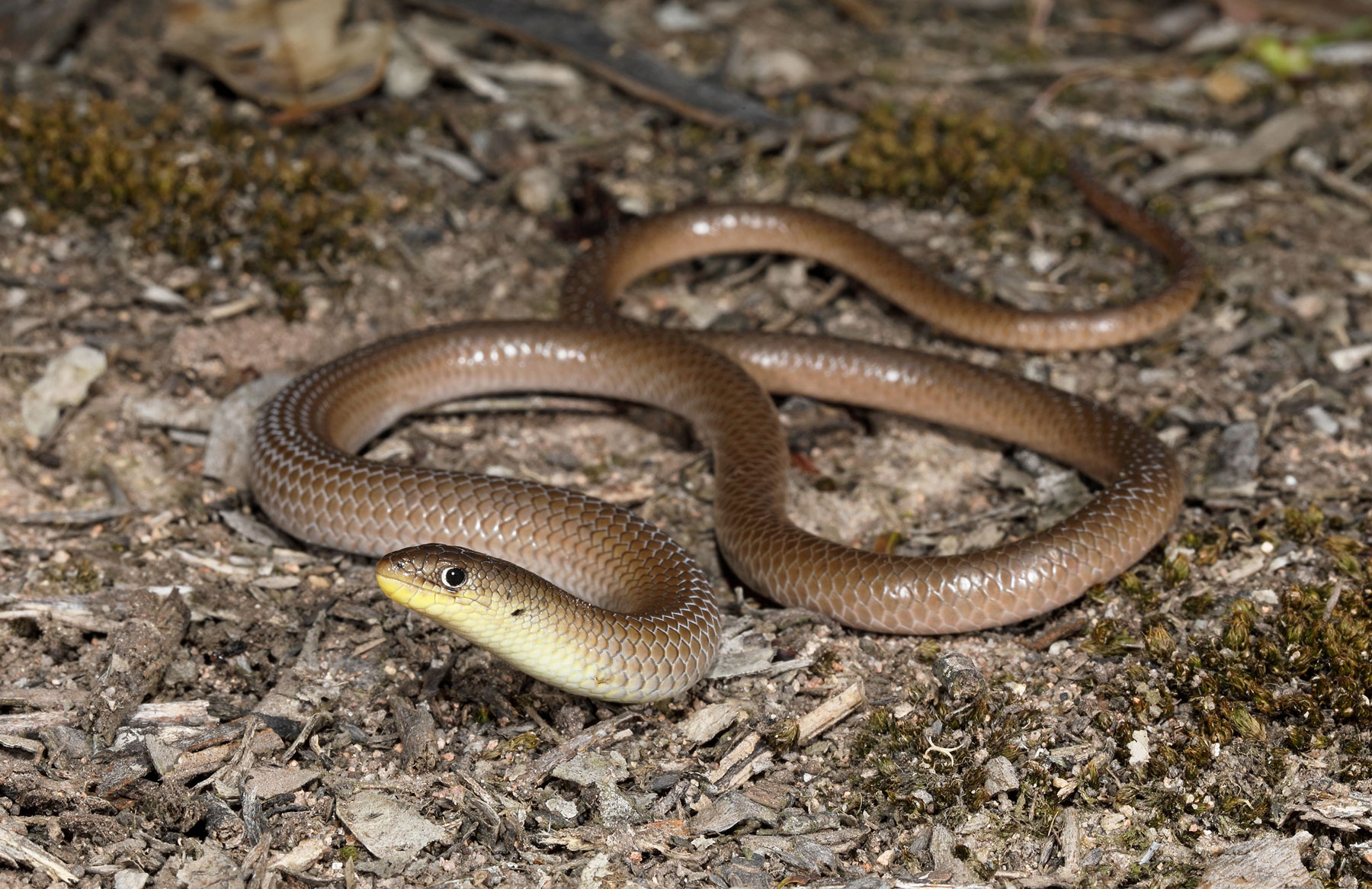By Ian Davidson and Chris Tzaros – Wangaratta Landcare & Sustainability
There are several species of legless lizards found throughout this region, perhaps the most commonly encountered being the Olive Legless Lizard. The general olive-brown colouration and slender-bodied appearance of this species bears some resemblance to a small brown snake, with which it can readily be mistaken at a quick glance. The Olive Legless Lizard is best identified by its obvious external ear opening near the eye, which is lacking in all snakes, and they lack the distinctive black head and collar markings present on all juvenile brown snakes. In size, Olive Legless Lizards can grow to over 45 cm but most specimens are around 20-30 cm in length. Examined closely in the hand (making sure you have a legless lizard and not a snake!), the long tail of the legless lizard is apparent. Beginning at the vent and extending to the tip, the tail makes up approximately two-thirds of the total length of the species. The well-developed hind-limb flaps (remnants of what were once legs in an evolutionary sense) can also be seen on the sides of their body.
Olive Legless Lizards are completely harmless and non-venomous. In the north-east region of Victoria, they favour areas of grassy eucalypt woodland, particularly areas strewn with surface rocks and fallen timber. They are often found coiled beneath embedded logs or flat rocks. In cold weather when the species is dormant, they remain still when exposed, but in warm conditions they often escape when disturbed by springing into the air and then making a quick getaway through nearby grass. It is important to retain ground-layer debris and minimise disturbance of habitat in order to ensure populations of this species, and indeed other reptiles, can occur in our rural landscapes.
Though they are predominantly diurnal, Olive Legless Lizards are occasionally active at night, especially in warmer weather. They prey mainly on crickets, grasshoppers, beetles, spiders and other invertebrates at ground level, hunting around areas of fallen timber and rocks and amongst grass cover.
Locally, Olive Legless Lizards have been found on grassy slopes of the Warby Ranges, and hills around localities such as Lurg, Eldorado and Chiltern. Though they can be moderately common in some areas of high quality habitat, they can be difficult to detect due to their shy and reclusive habits.

With an endearing grin, the Olive Legless Lizard is one of the regions’ most charming small reptiles. Photo by Chris Tzaros (Birds Bush and Beyond).

